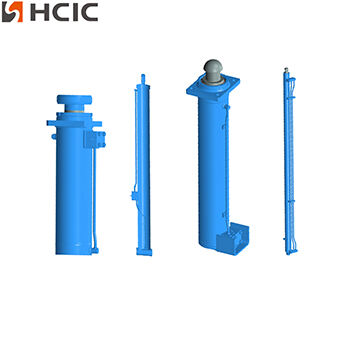Hydraulic Cylinders are one of the most important elements which industries require to enable linear motion from some push or pull action into some populace within liquid pressure. Since the cylinders come in different forms and sizes, it is very important that they be correctly stored so as to avoid any potential form of damage or corrosion.
7 Best Practices To Save Space When Storing Hydraulic Cylinders
Because of space restrictions and limited access, storing cylinders can be a continual problem. However, the below tips will help you to store your cylinders in an optimal space saving way and keep its integrity.
Make sure the installation location is neat and clean, dry supplemented by good ventilation to avoid dust accumulation moisture refreshing and corrosion gas on this surface of explains cylinder. Please remember to appropriately store your refillable propane cylinders in a vertical or horizontal arrangement based on the size and weight of each cylinder, by either using racks, shelves or cabinets. It is recommended that you write the cylinder number / spec on each canister for quick easy reference.
If an area has several stations requiring the filling of cylinders, using a mobile cylinder cart with wheels and brakes can help carry cylinders to different locations or store them in a compact space. You can choose a sturdy cart that has durable frame, more secure straps and with cushioned surfaces to avoid any impact or scratches while it is in transit. The wheels also should have locks to keep the cart from moving during stationary times.
The Correct Methods For Storing A Hydraulic Cylinder
In some cases, these hydraulic cylinders can be accommodated in compact storage areas or may require more space in extensive warehouses/ outdoor locations depending on the form of application and availability. No matter where the cylinders are stored, you need to follow some practices in order to preserve and functionalize them for longer.
One important thing is to keep the cylinders vertical with the piston facing upwards. This arrangement eliminates any retention areas for foreign debris or fluids within the cylinder offering self-drainage of what would be headache inducing leaks. It also lowers the risk of bending or warping of the piston rod and as a result less valid surface area - where most other lift manufacturers previously would need to size you up for larger cylinder sizes, consequently increasing chances (and aid) re-exposure.
Similarly, one of the most critical mistakes is stacking cylinders and similar shapes directly on top of each other when they are not all exactly the same size. Stacking of this type can place extra stress on the cylinder in bottom or cause deformation, damage and leakaging. If not, use pallets, cradles or dividers to segment the cylinders and distribute their weight evenly.
The Importance of Well-Organized Storage for Hydraulic Cylinder Seals
Hydraulic Cylinder Seals are used simply to keep the fluid pressure while isolating cylinder It can become more lavish than presence system in case of spindle speed. Unfortunately, a lot can happen to them if they are stored improperly and things like that reduce their overall performance while also requiring higher maintenance charges.
When storing, never disassemble the cylinder without first cleaning it thoroughly and blowing dry or seal damage is likely. Use a lint-free rag or compressed air to clean up any dirt, debris, or remaining fluid from the cylinder and seals. A dry lube or rust-proofing compound on the seals and cylinder can also help to prevent corrosion, while always ensuring a smooth fit for easy assembly.
That requires housing the hydraulic cylinders in new ways.
There are situations where a special condition is applied to the storage of hydraulic cylinders, such as space restrictions or extreme conditions when it comes to climate and even hazardous environments. In cases like these the space can be utilized and cylinders is to make sure that it does not come in contact with each other; solutions can often helpreduce damage.
If space is an issue, consider a vertical storage system - which can use the height of the room to store your cylinders upright. This type can accommodate a pulley or hoist for ease in raising and lowering cylinders without manual intervention.
When storing your cylinders outside, weatherproof covers or options with shells are ideal to protect the units from heavy rain/snowfall or direct sunlight. These covers are made of heavy duty water proof, UV resistant and breathable materials called plastic or fabric.
Adopting Best Practices for Handling Safely
Hydraulic cylinders storage should be done in a manner that all handling remains safe as per the best practice avoiding possible accidents or causing harm to yourself and others. Cylinder-handle welding practices consist of using proper safety equipment such as goggles or other eye protection, gloves and steel-toed boots.
Also, when placing cylinders to different locations use correct lifting equipment i.e cranes,forklifts or with sling straps. Ensure the equipment you use is capable of lifting/positioning this amount, that it fully complies with weight & size requirements for your cylinder and check load is securely seated in merchandise.
In Conclusion
Proper storage and maintenance of hydraulic cylinders are one way to ensure continued performance from the cylinder. By using the above tips, tricks and innovative solutions, you can maximize your storage space while protecting cylinders from harm or deterioration in addition to fostering safer handling practices. In the end, good storage practices are crucial to prolonging hydraulic cylinder lifetime and efficiency without risking costly repairs or replacements.

 EN
EN
 AR
AR
 BG
BG
 HR
HR
 CS
CS
 DA
DA
 NL
NL
 FI
FI
 FR
FR
 DE
DE
 EL
EL
 HI
HI
 IT
IT
 JA
JA
 KO
KO
 NO
NO
 PL
PL
 PT
PT
 RO
RO
 RU
RU
 ES
ES
 SV
SV
 CA
CA
 TL
TL
 IW
IW
 ID
ID
 LV
LV
 LT
LT
 SR
SR
 SK
SK
 UK
UK
 VI
VI
 HU
HU
 TH
TH
 TR
TR
 FA
FA
 MS
MS
 GA
GA
 CY
CY
 KA
KA



